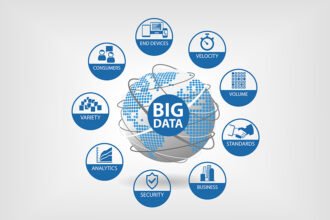An occasional series in which a review of recent posts on SmartData Collective reveals the following nuggets:
Credit where credit is due
In every case, market sectors were created or developed by small companies. Look at supply chain planning, warehouse management, human resources/human capital management, enterprise asset management, customer relationship management, sourcing and procurement, applications-as-a-service, and the nascent energy and emissions management markets.
Be honest, now
Ask yourself if you know which customers are driving profits and which are destroying them? If not, this might be the best place to start thinking about improving insight and process improvement.
Well, it’s better than stealing
I recommend that all science grads read Tom Davenport’s book “Competing on Analytics.” It illustrates, with compelling examples, how businesses can benefit from using science and analytics. Several examples in Tom’s book come from Gary Loveman, CEO of Harrah’s Entertainment, [who has] famously said many times that there are …
An occasional series in which a review of recent posts on SmartData Collective reveals the following nuggets:
Credit where credit is due
In every case, market sectors were created or developed by small companies. Look at supply chain planning, warehouse management, human resources/human capital management, enterprise asset management, customer relationship management, sourcing and procurement, applications-as-a-service, and the nascent energy and emissions management markets.
Be honest, now
Ask yourself
if you know which customers are driving profits and which are
destroying them? If not, this might be the best place to start thinking
about improving insight and process improvement.
Well, it’s better than stealing
I recommend that all science grads read Tom Davenport’s book “Competing on Analytics.” It illustrates, with compelling examples, how businesses can benefit from using science and analytics. Several examples in Tom’s book come from Gary Loveman, CEO of Harrah’s Entertainment, [who has] famously said many times that there are three ways to get fired at Harrah’s: steal, harass women, or not use a control group. Business leaders across all industries are increasingly wanting data, analytics and scientific decision-making. Science grads have great training that enables them to take on these roles and to demonstrate the success of these methods.
Let’s hear it for the relational database
The Relational Database hasn’t maintained its dominance out of dumb luck. Instead, the RDBMS has consistently outperformed while providing the most general use capability of all the variety of platforms that have been available. Many other approaches have been tried; often, these have provided better object model integration (OODBMS) or better data model representation. But when the rubber has hit the road they have failed on one or more of the key staples of a DBMS – performance, scalability, security, reliability, recoverability and ease of use.
You’re not alone
The real point, though, is (1) to be aware of your online presence, (2) to be aware that, if you’re online, you are adding to your (or detracting from) your brand, and (3) don’t let your online presence grow on its own—build a strategy and execute it consciously.
Beware the random number generator
A recent discussion on r-help highlighted a similar security issue: a professor was considering using a random-number generator to generate questions for a student exam, until he learned that the random number stream (and therefore the answers) could be reverse-engineered in a matter of hours. (Then again, a student capable of that reverse-engineering task should be able to pass the exam with ease.)
It’s what they expect
When it comes to reporting, there’s a difference between the BI team and the rest of IT. The fact is that BI teams are successful not because of the infrastructure technologies, but because of the technologies in front of the users: the actual BI tool. To the end user, data visualization and access are much more important than database management and storage infrastructure. So when a new operational system is introduced, users expect the same functionality, look and feel as their other reports.






